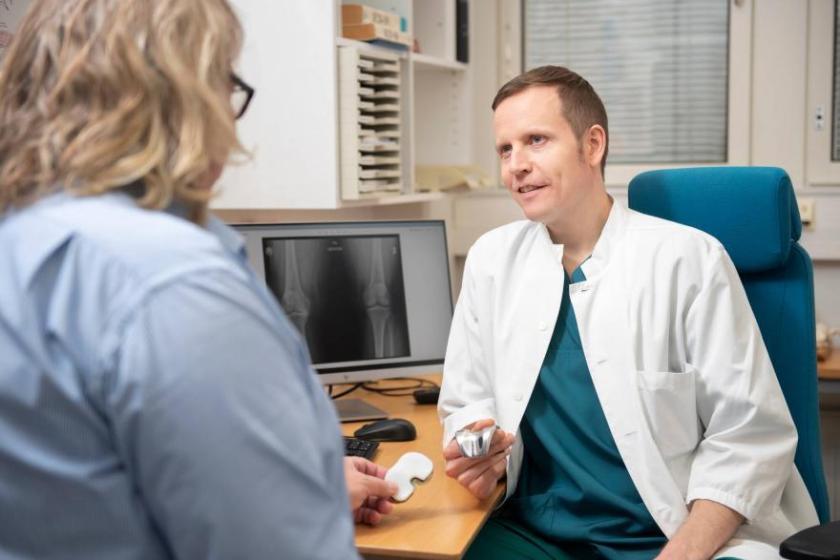Treatment of quadriplegia
Quadriplegia, or tetraplegia, is a condition for which our specialized unit for demanding hand surgery at Meilahti Bridge Hospital can provide assistance to improve the patient’s quality of life. We treat patients from all over Finland.
We can improve the function of the upper limb of a patient with quadriplegia by performing various corrective procedures on the tendons, joints and nerves to improve functional capacity, self-sufficiency, and quality of life. More and more patients can return to an active life with these types of surgical procedures and the subsequent active rehabilitation. The need for 24-hour assistance can be reduced by means of corrective surgery on the upper limbs.
Evaluation of treatment opportunities for each quadriplegic patient
Our goal is to provide each quadriplegic patient in Finland with a situational assessment performed by our hand surgeon who is experienced in hand issues and surgical procedures in this patient category. Surgery requires technically very meticulous planning and implementation. We select the type of surgery individually depending on which functioning muscles the patient still has left in the upper limb and shoulder area. We consider the patient’s individual wishes when planning surgical treatment.
Our goal for revision surgeries is usually to try to enable upper limb activities that are important in daily life, such as reaching for or grasping objects.
Surgery types
Correction of the extension of the elbow joint
Functional extension of the elbow joint allows the upper limb to be placed in different positions and improves the reach of the upper limbs, for example, when reaching up or to support or raise the body in bed.
Functional elbow extension also improves the thrust of the upper limb when propelling a wheelchair. If you have enough deltoid muscle strength and good upper limb balance control, we can build good elbow joint extension using, for example, a part of the triceps muscle of the arm.
Correction of the hand grip
Our aim in building a good hand grip is to enable the key pinch between the thumb and index finger and grasping larger objects with the palmar grip.
These functionalities can often be built by reorganizing certain functioning muscles or nerves in the forearm. The opening of the fingers is often improved by balancing the tendons or by nerve transplant surgery. The carpometacarpal joint of the thumb is often supported during surgery to ensure a firm grip.
Reducing spasticity
Spasticity is a common problem in patients with quadriplegia. It manifests itself as muscle stiffness in the limbs. In the upper limbs, spasticity can cause, for example, the upper arm becoming pressed against the body and a stiffening of the elbow joint, wrist and fingers in a hook position. This interferes with the use of the hand or sometimes even makes it impossible.
We treat spasticity primarily with motion therapy, stretching and medication, and sometimes with a surgical procedure. In surgery, the spastic muscle is either elongated or severed.
Rehabilitation Hub (opens in new window, links to another website)
For more information about quadriplegia, please visit the Health Village Rehabilitation Hub. Health Village (Terveyskylä) is an online service for specialized healthcare (currently only in Finnish).
Units
Outpatient Clinic, Meilahti Bridge Hospital
Meilahti Bridge Hospital Outpatient Clinic admits patients by appointment only. Patients come to us for their first appointment with a referral, or for a…
Updated: 12.06.2025

